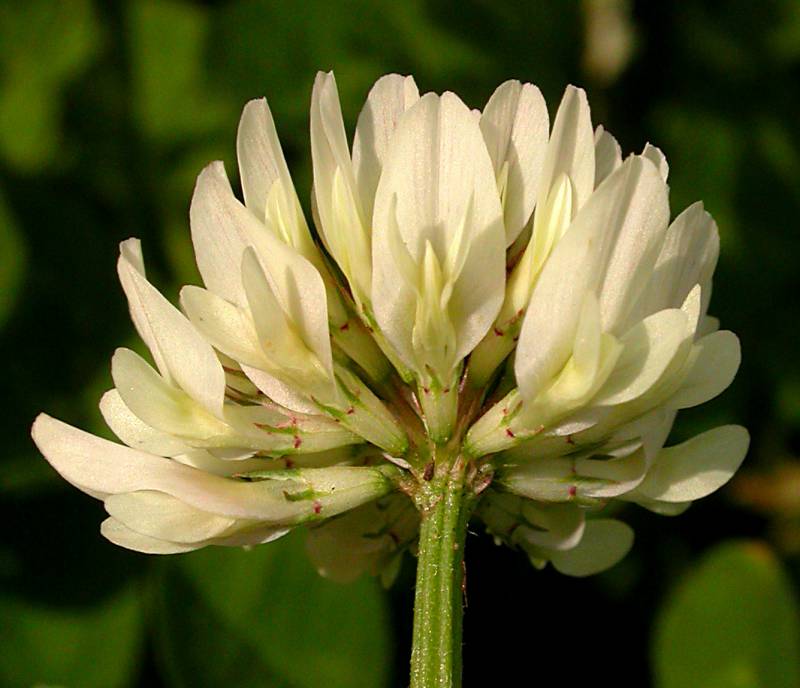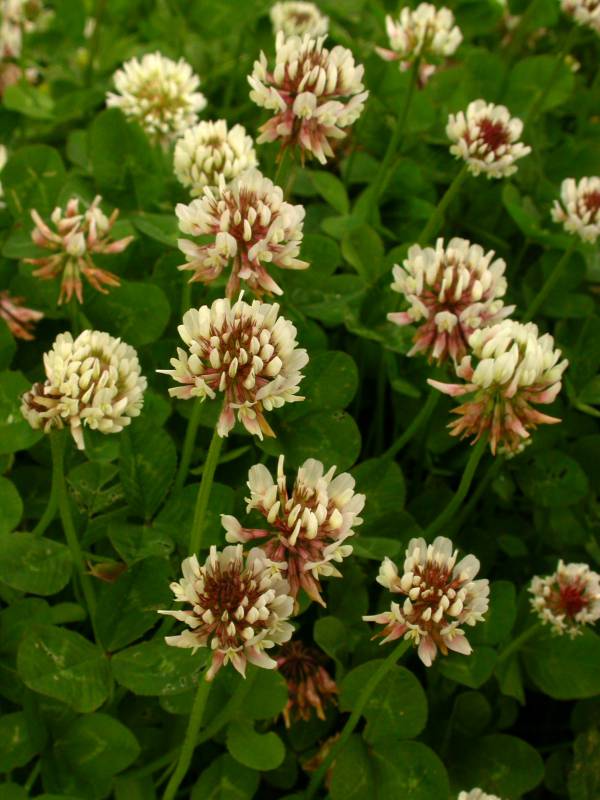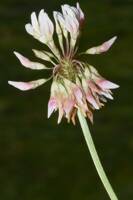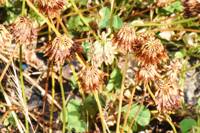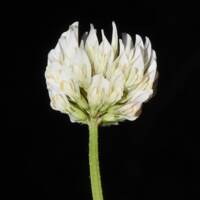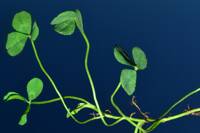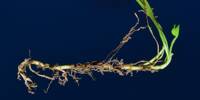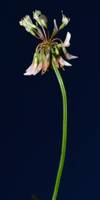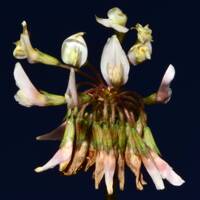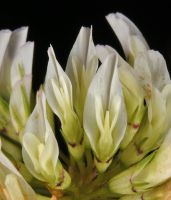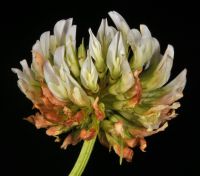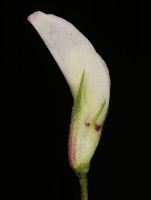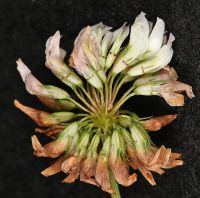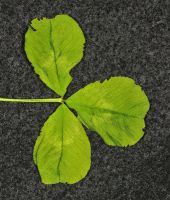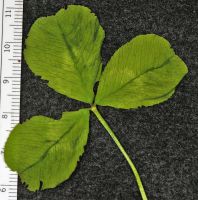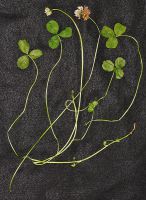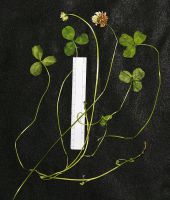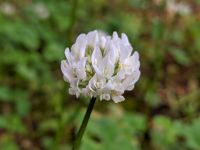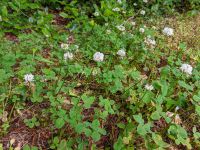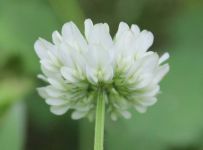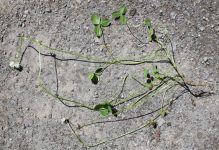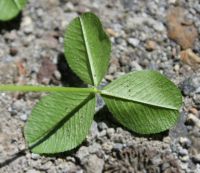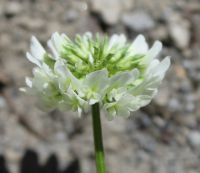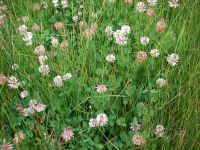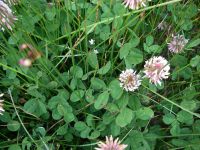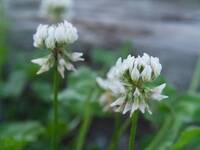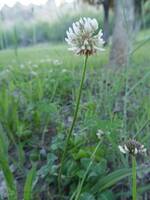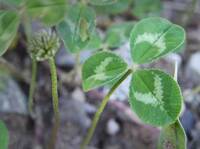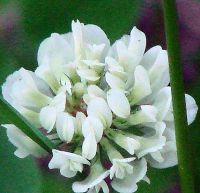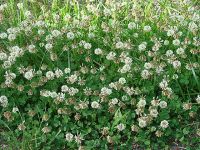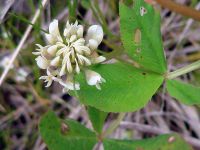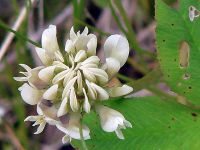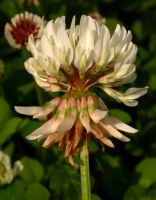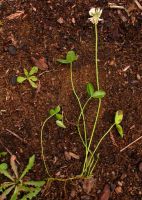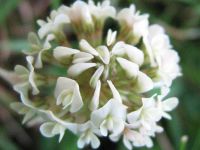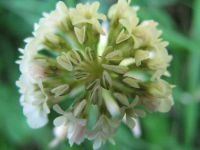Distribution: Widely distributed throughout Washington; Alaska to California, east across North America to the Atlantic Coast.
Habitat: Roadsides, fields, lawns, meadows, wastelots, trailsides, and other disturbed open areas from low elevations to the subalpine.
Flowers: April-September
Origin: Introduced from Europe
Growth Duration: Perennial
Conservation Status: Not of concern
Pollination: Bumblebees, bees, butterflies, flies
Mostly glabrous perennial, the stems 1-6 dm. long, creeping and stolonous to erect.
Leaves trifoliate, long-petiolate; leaflets obovate to obcordate, 1-2 cm. long, finely serrulate; stipules attached around the petiole most of their length, the free portion acuminate.
Inflorescence of many-flowered heads 1.5-2 cm. long and broad, on long, axillary peduncles; flowers pea-like, 5-9 mm. long, white to cream, often pinkish-tinged; pendulous on pedicels 1-5 mm. long; calyx glabrous, half the length of the corolla, the 5 teeth awl-shaped, half the length of the tube; banner erect.
Pod 1-3 seeded.
Publication: Sp. Pl. 2: 767. 1753.
PNW Herbaria: Specimen records of Trifolium repens in the Consortium of Pacific Northwest Herbaria database
WA Flora Checklist: Trifolium repens checklist entry
OregonFlora: Trifolium repens information
E-Flora BC: Trifolium repens atlas page
CalPhotos: Trifolium repens photos

